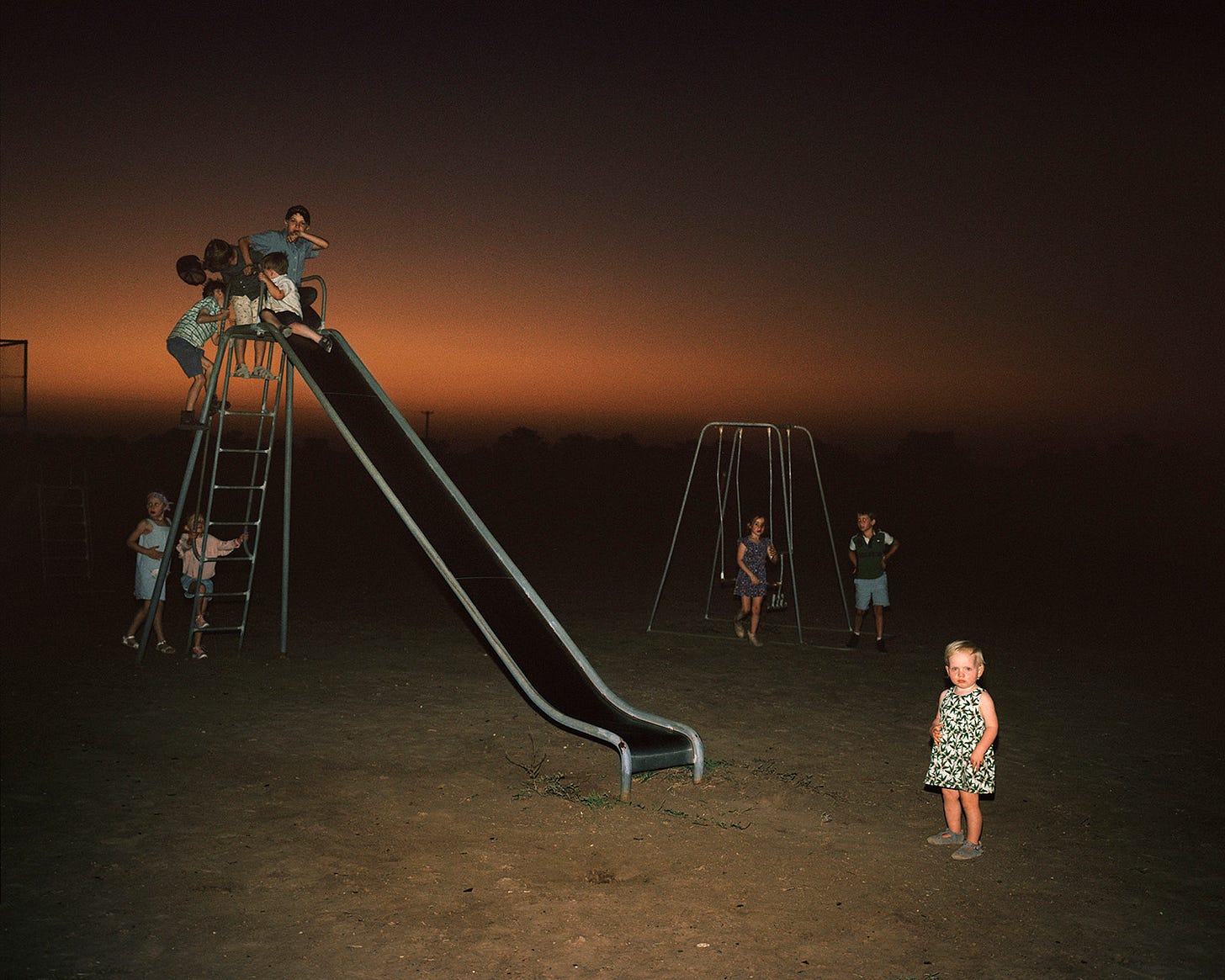Feeling Lost and Pushing Through
Reflecting on metaphor when photographing climate change
Over the last week, I’ve been traveling in Nevada and Utah, making photographs for an upcoming story about climate change in America. Sweaty tourists swagger down the Las Vegas Strip, and just 100 miles away, ranchers battle an ongoing megadrought. Climate change is such an immense issue that when I head out to document it, I get lost in the saturation of everything. Every person that walks past, every vista out a car window, is climate change.
I’ll admit there have been moments on this trip I’ve felt creatively lost. While climate change is everywhere, it’s also invisible—everything looks how it normally would. It’s there in the data, but the data is hard to see.
To push through this disillusion, I started to think about photographs I have made that I felt captured the theme of a story in a random moment of daily life. It brought me to this image I made in 2018 at a Christmas Tree party in the one-shop town of Come By Chance in NSW, Australia.
The area had been in drought for the previous seven years—farmers had de-stocked much of their cattle and had not planted crops for two years. These farmers had sustained themselves through drought before, but only for so long. Another year or two without rain in Come By Chance would break them. Brown dirt stretched from the horizon to the community hall, where local farmers gathered with their children to decorate a cut tree with red and silver tinsel. One of the older farmers dressed as Santa Claus and delivered presents.
I photographed the Christmas Tree Party all through the hot afternoon but knew I hadn’t yet made an image that described the immensity of the drought. So I kept searching.
As the sun dropped below the horizon, many farmer’s children laughed and climbed on the playground. A small cemetery of a few hundred headstones watched from across the road. When I saw the scene, I knew this was what I was looking for.
It wasn’t an image of the events that showed how families cook a Christmas feast or how kids open Christmas presents. It didn’t instruct me or an audience in a documentary sense—it was a spare moment on the periphery of an event that could act as a symbol. The offspring of farmers, suspended on a playground over drought-stricken land, told me more about climate change than the predictable events I had witnessed through the afternoon.
Finding a metaphor is always my aim; a moment that transcends the proceedings, that becomes the archetypal theme of what I am photographing. This is what I think makes an image successful.


Looking at Come By Change on Google Maps and comparing it to the neighbouring Pilliga Nature Reserve, it appears, quite simplistically, that razing the land creates such dust bowl situations. It's not a metaphor, it's cause and effect.
I agree with Brad below. The problem with metaphors in a story involving science is interpretation. There is ample evidence around but it requires serious research and the experience to know what is different from a few years ago or a few decades ago. Come by Chance in NSW is a dry region and looks dry often. One of the main impacts of climate change in our region is the drying of the forested ranges and coastal areas. For example the subtropical rainforests south of Rockhampton have received about 1.5m less than average rainfall over past 2 years. To the casual observer it might not look any different until a dry hot summer and suddenly you have a rainforest burning like in NSW in 2019. Climate change is one of those subjects that requires photojournalism to tell the story rather than art. I’ve seen so many “drought” images from areas that are usually semi-arid.